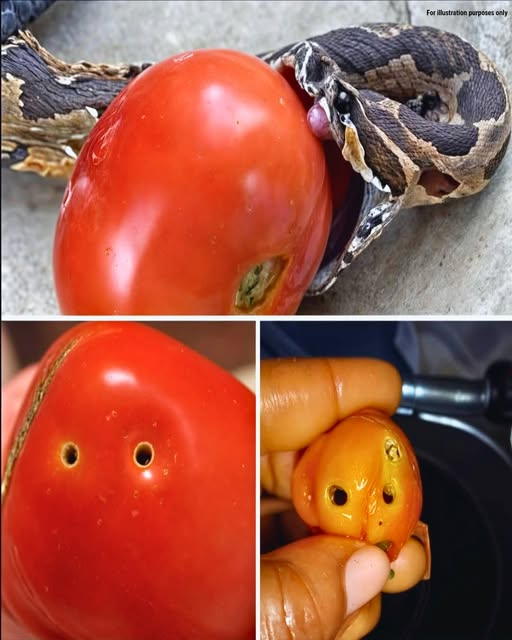
If you’ve ever found a hole in a tomato, you’re not alone. It’s a common problem, and the reasons behind it are interesting (and sometimes gross). Let’s break down the causes and what you can do about it.

Why Do Tomatoes Get Holes?
- Insects: Pests like tomato fruitworms, hornworms, and beetles chew holes into tomatoes, sometimes leaving only the outer skin looking fine while the inside gets damaged.
- Birds and Squirrels: Birds peck at ripe tomatoes, especially in dry weather, and squirrels often leave bigger holes when they take bites from the fruit.
- Physical Damage: Weather stress, improper handling, or growth issues like “catfacing” (caused by cold temperatures) can also lead to holes.
Can You Eat a Tomato with a Hole?
- Yes, if the hole is small, no pests are inside, and the inside looks fresh with no mold or weird smells.
- No, if the hole is large, soggy, or moldy.
How to Prevent Holes in Tomatoes:
- Inspect Regularly: Check for pests or signs of damage.
- Water Evenly: Prevent splitting by avoiding sudden changes in watering.
- Use Netting: Protect tomatoes from birds and squirrels with mesh.
- Companion Planting: Use plants like basil or garlic to repel pests.
- Keep the Area Clean: Remove fallen fruit and weeds to discourage pests.
What to Do if You Find a Hole:
- Check the tomato for pests or mold.
- If the inside is fine, cut around the damaged area and use the rest.
- If it’s bad, throw it away.
- Inspect your plants for more damage and treat the problem accordingly.
Finding a hole isn’t the end of the world—just adjust your care and watch for pests to prevent it from happening again!
